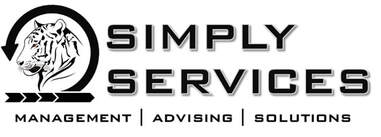|
So you have been reading our emails. Your taking your finances seriously, you are making sure that your expenses are being booked to the correct accounts and are closing the books. Now you have a set of freshly printed financials sitting in front of, and now your thinking "Ok Alex, now what?"
Reading financials is like knowing how to read another language. While making sure that the last number at the bottom of a financial statement is black or without parenthesis (notating a loss) it's not the only aspect to look at. An Income Statement is a snapshot in time. It shows you how you did for the month, year or year to date by showing how much income came in during the time period and how much it cost to generate that income. The best time frames to review are the previous month and year to date. Why both? It represents a tactical and strategic view of your business. Reviewing the previous month can let you know if any issues have come up that need to be investigated and addressed. You should always take into consideration any seasonality or peaks and valleys that occur throughout the year especially if your business is driven by weather or seasons. Any strategic or long term business decisions should be based on your year to date. In essence when you review your financials you should look to see how the current month contributes to your year to date, you don't want to rewire your entire business due to one off month. There are also some calculations that can be used to help know how well your business did. Gross profit margin can let you know how much of the income you were able to keep after expenses. Calculating the percentage that an expense item is to total revenue is good to know which expense line item is the highest. You can also compare your financial statement to a budget if you have one to see how close you came to expectations. Comparing current month to previous month or to the same month from the prior year can also be good ways to measure how well your business is doing. Some other calculations you can perform are average revenue per client or comparing sales volumes to budget or other periods. This allows for a holistic view and incorporates operational volumes. While it is tempting to look at expenses and to see what can be eliminated in terms of costs, it is not the only part of the business that should be scrutinized. Yes, a business should run as lean as possible but instead of cutting costs, look to increase the value your getting for your business dollar. Also look to see if your advertising costs are providing you the sales you need for your business. There needs to be a balanced approach where both sales and costs are reviewed for opportunities. Avoid the mistake of trying to make your business succeed from the expense side of the income statement only. So knowing how to read your income statement will provide you a wealth of knowledge of not just what is going on with your business but also what opportunities there are for your business to be more successful. With knowledge comes power, the power for better decision making and driving success.
0 Comments
|
Archives
November 2020
Categories
All
|


 RSS Feed
RSS Feed